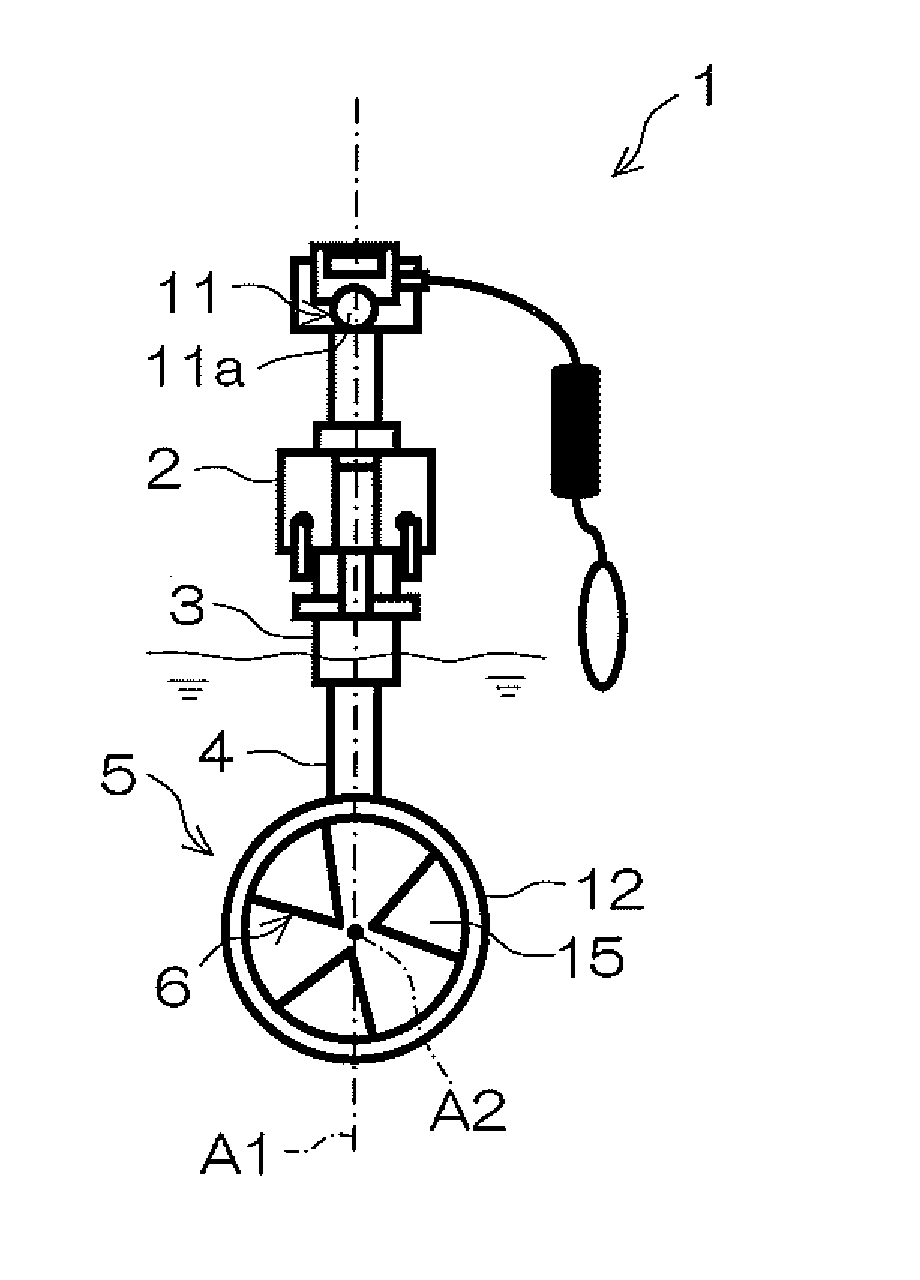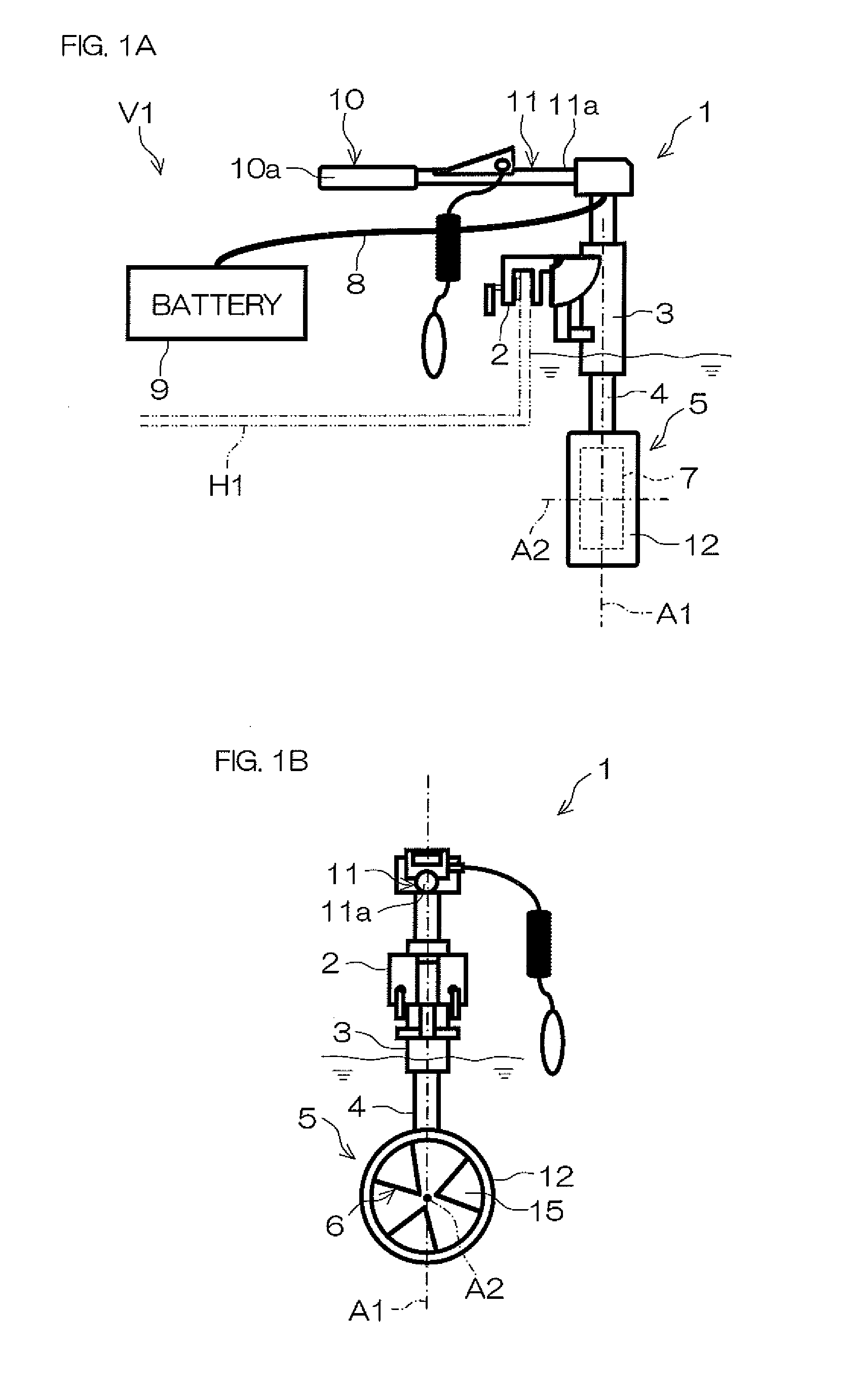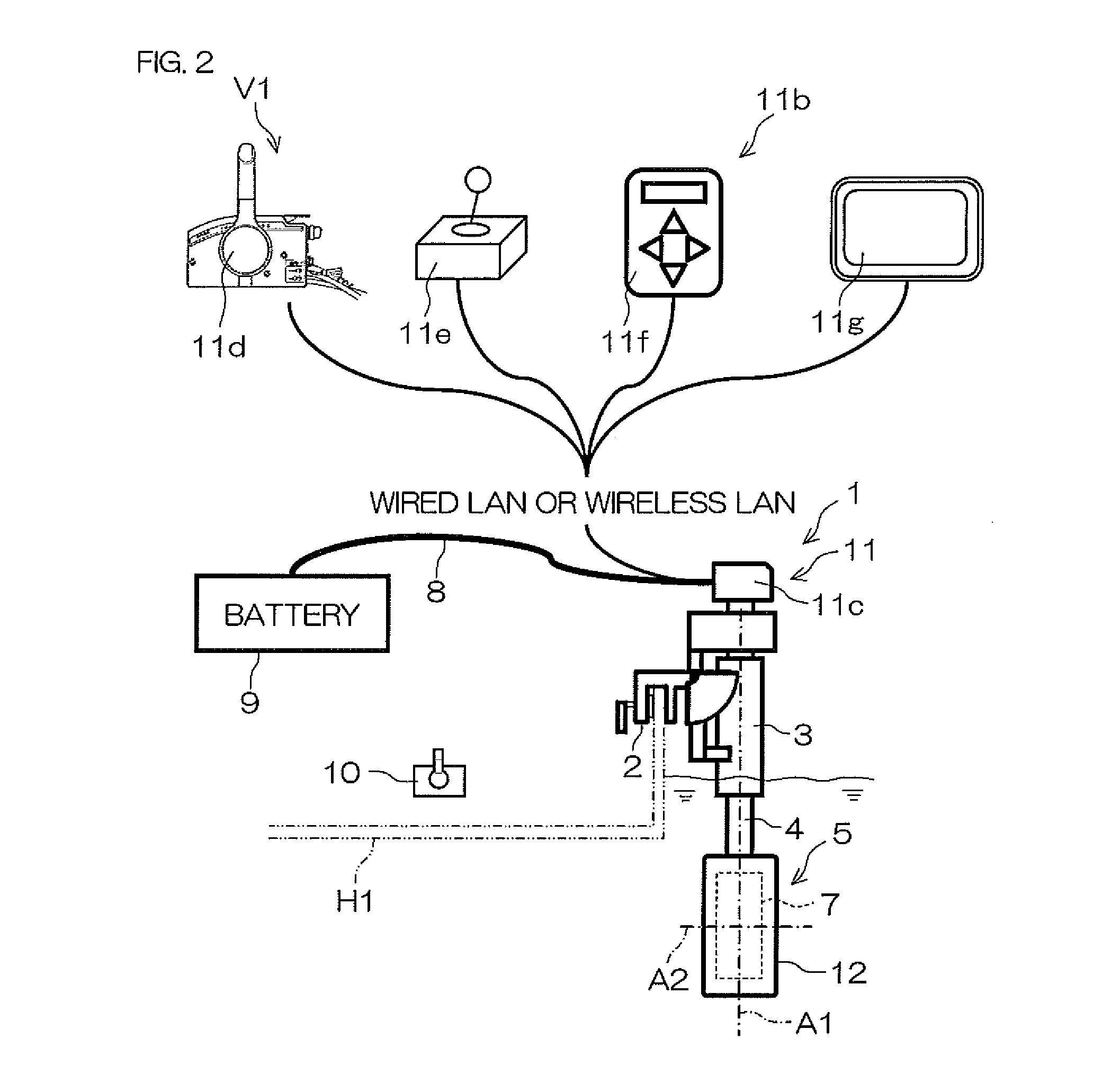Marine vessel propulsion device
a propulsion device and vessel technology, applied in marine propulsion, vessel parts, vessel construction, etc., can solve the problems of increasing the size of the lower case containing the bevel gear, the diameter of the rotor can be enlarged, and the output of the electric motor can be increased, so as to prevent the reduction of propulsive efficiency, the effect of reducing the size of the rotor and reducing the size of the bevel gear
- Summary
- Abstract
- Description
- Claims
- Application Information
AI Technical Summary
Benefits of technology
Problems solved by technology
Method used
Image
Examples
Embodiment Construction
[0072]Propellers according to the following preferred embodiments are preferably rotatable in a normal rotation direction and in a reverse rotation direction. The normal rotation direction may be a clockwise direction (i.e., right-handed rotation direction) when the propeller is seen from behind, or may be a counterclockwise direction (i.e., left-handed rotation direction) when the propeller is seen from behind. Hereinafter, the clockwise direction of the propeller seen from behind is defined as the normal rotation direction of the propeller, and the counterclockwise direction of the propeller seen from behind is defined as the reverse rotation direction of the propeller.
[0073]FIG. 1A is a side view of a marine vessel propulsion device 1 according to a first preferred embodiment of the present invention, and FIG. 1B is a front view of the marine vessel propulsion device 1 shown in FIG. 1A. FIG. 2 is a side view of the marine vessel propulsion device 1 according to the first preferre...
PUM
 Login to View More
Login to View More Abstract
Description
Claims
Application Information
 Login to View More
Login to View More - R&D
- Intellectual Property
- Life Sciences
- Materials
- Tech Scout
- Unparalleled Data Quality
- Higher Quality Content
- 60% Fewer Hallucinations
Browse by: Latest US Patents, China's latest patents, Technical Efficacy Thesaurus, Application Domain, Technology Topic, Popular Technical Reports.
© 2025 PatSnap. All rights reserved.Legal|Privacy policy|Modern Slavery Act Transparency Statement|Sitemap|About US| Contact US: help@patsnap.com



